Mastering Recording on Windows 10: A Complete Guide


Intro
Starting a recording on Windows 10 can empower users to capture audio and video content effectively. Whether for gaming, tutorials, or professional presentations, understanding the functionalities available is crucial. Windows 10 offers built-in capabilities, such as the Xbox Game Bar for screen recordings, as well as options for audio recording. This article delves into the various tools and methods users can employ to commence their recordings seamlessly. We will guide you through effective techniques for optimal performance, identify helpful third-party software, and present troubleshooting tips tailored for both newcomers and experienced users.
Key Features
Windows 10 integrates several features aimed at enhancing the recording experience. Here are some noteworthy aspects:
- Built-in Tools: Windows 10 provides the Xbox Game Bar, allowing users to record their screens effortlessly. This tool is primarily aimed at gamers but can be utilized for any screen activity.
- Audio Recording: The Voice Recorder app enables users to capture high-quality audio easily. It is straightforward and does not require extensive technical expertise.
- User-Friendly Interface: The design of built-in recording tools prioritizes ease-of-use, making the recording process accessible for all users.
Design and Usability
The interfaces for the built-in tools are clean and intuitive. Users can navigate through the menus with minimal effort. Each tool integrates into the Windows environment, ensuring a consistent user experience.
Performance and Quality
Recording quality on Windows 10 can vary depending on settings and hardware. Utilizing the correct configurations can significantly enhance both video and audio clarity. Optimal settings include adjusting resolution for video recordings and ensuring a clear microphone input for audio recordings.
Common Tools for Recording
Users have choices, from built-in solutions to third-party software, enhancing versatility:
- Xbox Game Bar: Ideal for screen captures, it offers simple shortcuts for recording.
- Voice Recorder: A lightweight app for high-quality audio recording.
- OBS Studio: A popular choice among streamers for extensive features and customizability.
- Camtasia: Provides more advanced editing options combined with screen recording capabilities.
With these tools, users can select the best fit for their recording needs.
Troubleshooting Tips
Users might encounter specific issues while recording. Addressing these challenges ensures smoother recording experiences:
- Audio Issues: Check microphone settings in the Sound settings panel.
- Screen Recording Failures: Ensure gaming mode is enabled under the Gaming section in settings.
- Performance Lags: Close unnecessary applications to free up system resources.
In practice, resolving these issues often involves a combination of adjusting settings and ensuring the computer is optimized for performance.
Culmination
Starting a recording on Windows 10 is an accessible endeavor with the right guidance. This article provides the essential steps and insights to navigate the recording landscape effectively. With a focus on built-in features and reliable third-party tools, users can capture high-quality content tailored to their unique needs.
Preamble to Recording on Windows
In today's digital landscape, the ability to record audio and screen actions on a computer is increasingly vital. Recording on Windows 10 is not just a technical possibility; it has become a necessity for many users, whether they are creating content, conducting webinars, or capturing gameplay. This article aims to shed light on the specific tools available for recording on Windows 10 and how to use them effectively.
Understanding the nuances of recording can enhance the quality of a project, making it essential for both hobbyists and professionals alike. The tools native to Windows 10, as well as third-party applications, offer diverse functionalities suited for different needs.
By mastering these features, users can streamline their workflow and produce high-quality recordings with relative ease.
Understanding Recording Need
The need for recording varies among users. For educators, the ability to record lectures can help disseminate information more effectively. Gamers often seek to capture their gameplay for streaming or sharing moments with friends. Businesses might require recordings for meetings, presentations, or training sessions.
Every scenario demands different features, making it vital to understand one’s specific recording needs.
The choice of software or tools can dramatically affect the end product and determine how well the recorded content serves its purpose. As a result, identifying the requirements beforehand ensures users can select the most appropriate method for their tasks.
Target Audience for Recording
The target audience for recording encompasses a broad spectrum. Tech enthusiasts and early adopters often have a keen interest in exploring the latest tools available. These users tend to be familiar with technology and may seek advanced features to enhance their recordings.
On the other hand, novice users, including students and casual content creators, may prioritize simplicity and ease of use. They need straightforward instructions and intuitive interfaces.
Understanding who the recordings are for will influence how one approaches the entire process, from preparation to execution. This insight not only helps in selecting the right application but also in optimizing the recording technique for the intended audience.
Built-in Recording Features of Windows
Recording on Windows 10 has become increasingly essential for various users, ranging from content creators to business professionals and educators. The built-in recording features present in this operating system are created not just to meet the basic needs but also to support more advanced requirements. Understanding these tools can enhance productivity and provide significant utility without needing to install additional software.
Windows Voice Recorder Application
The Windows Voice Recorder application is a straightforward tool designed for audio recording. It offers a minimalistic interface which makes it accessible for all users, including those who may not have technical expertise. This application allows users to capture high-quality audio with just a few clicks.
To launch the application, users can type "Voice Recorder" in the Windows search bar and click on the corresponding result. Once opened, a simple recording button is prominently displayed, making it easy to start capturing audio at any moment. One of its key features is the ability to pause recordings. This option is especially useful for users who may need to interact during a recording session or wish to edit out sections later.
Additionally, audio files are automatically saved in a convenient and organized manner. They can be easily accessed through the app or in the user's default music folder. The application also offers a sharing feature, allowing for quick distribution of audio files via email or social media.
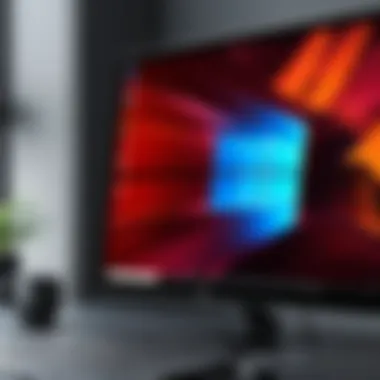
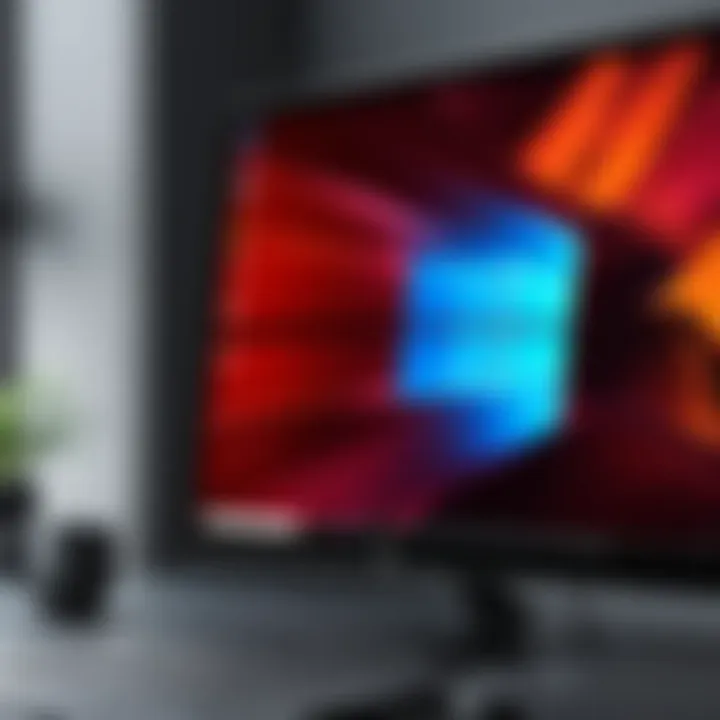
Moreover, the Windows Voice Recorder is integrated with cloud services via OneDrive, letting users sync their recordings across devices seamlessly. This feature ensures users can access their work from anywhere, making it a valuable asset in today's digital ecosystem.
Game Bar for Screen Recording
The Game Bar feature is primarily aimed at gamers but serves multiple functions suitable for everyone needing screen recording capabilities. By pressing the Windows key + G, users can summon the Game Bar, which provides an intuitive overlay that facilitates recording gameplay or any on-screen activity.
For recording, the user simply needs to click the record button or use the shortcut Windows key + Alt + R. This function is excellent for creating tutorials, sharing gameplay, or capturing any essential tasks performed on the screen. The recordings are saved automatically in the Videos folder under "Captures," ensuring easy access for later editing or sharing.
The Game Bar also includes additional features such as performance metrics and the ability to take screenshots, which can be particularly beneficial for content creators. It is essential to note that the Game Bar may not work with all applications. Users might encounter limitations when trying to record certain windows or applications that do not support recording. It is always recommended to check compatibility ahead of time.
In summary, utilizing the built-in recording features like the Windows Voice Recorder and the Game Bar allows Windows 10 users to conduct high-quality recordings efficiently and effectively. Understanding these tools can greatly enhance the overall recording experience, making it a vital part of any user's toolkit.
Launching the Windows Voice Recorder
The Windows Voice Recorder is a fundamental tool offered by Microsoft, enabling users to capture high-quality audio effortlessly. Its importance is underscored by the increasing need for easy-to-use applications that support diverse recording tasks, such as creating voice memos, recording lectures, or capturing interviews. Selecting this application is not only about convenience; it also reflects the growing trend toward digital note-taking and audio documentation.
Benefits of Using Windows Voice Recorder:
- User-Friendly Interface: The application is designed with simplicity in mind, making it accessible to all users, regardless of their technical proficiency.
- Integration with Windows 10: Being built into the operating system means that you do not need to install additional software, which can often be riddled with complexities.
- Versatile Recording Options: It allows users to pause, resume, and trim recordings, making it adaptable to various recording scenarios.
- Cloud Compatibility: Recordings can be saved directly to OneDrive, enabling access across devices.
Before diving into recording, understanding how to access and navigate the Voice Recorder application is crucial.
Accessing the Application
To access the Windows Voice Recorder, follow these steps:
- Search for the Application: Click on the Start menu located at the bottom left of your screen. Here, type "Voice Recorder" in the search bar.
- Launch the Application: Once it appears in the search results, click on it to open. For those who prefer a quicker route, you can also press the Windows + R keys and type in the Run dialog box.
- Pin to Taskbar (Optional): If you find yourself using the application frequently, consider pinning it to your taskbar for easier access. Right-click on the application icon and select "Pin to Taskbar."
By familiarizing yourself with these steps, you can quickly get started with your recordings.
Initiating a Recording Session
Once the Windows Voice Recorder is open, initiating a recording session is straightforward:
- Starting the Recording: Simply click the big, circular red button labeled "Record". This button is prominently displayed on the main interface.
- Pausing and Resuming: If you need to take a break during your recording, click the pause button that appears. To continue, press the record button again.
- Stopping the Recording: When you have finished your session, click the stop button, which will end the recording.
- Reviewing Your Recording: After stopping, the recording will be automatically saved. You can find it listed on the left side of the application window under the "Recordings" section.
The ease of use of the Windows Voice Recorder makes it an excellent option for quick audio capture without overwhelming users with options.
Remember to check the microphone setup before starting a session to ensure sound clarity. This preliminary step can significantly enhance the overall quality of your recordings.
Using the Game Bar for Screen Recording
Using the Game Bar for screen recording is a significant aspect of capturing and sharing visual content on Windows 10. The Game Bar is designed primarily for gamers, but its functionality extends beyond that scope. It allows users to record gameplay effortlessly while also having the ability to capture other applications, such as presentations and tutorials. This versatility makes it an important tool for a variety of users, including content creators and educators.
The benefits of using the Game Bar are manifold. First and foremost, its integration with Windows 10 means no additional software is necessary, simplifying the user experience. Furthermore, it provides options for high-quality video recording. Users can record in 1080p with 60 frames per second if their system supports it, ensuring that the final product meets a professional standard. Additionally, the Game Bar allows users to capture audio along with video, making it suitable for creating comprehensive video tutorials or streams.
Considerations regarding the Game Bar's use include ensuring hardware compatibility and confirming that the necessary settings are enabled. Users should be aware of the potential need for adjustments in case applications are not performing as expected.
Activating Game Bar
Activating the Game Bar is a straightforward process that begins with confirming the settings for your Windows 10 device. Users can access the Game Bar by pressing the Windows key + G while in any application. However, one must ensure that the Game Bar is enabled. To check this:
- Open Settings from the Start Menu.
- Navigate to Gaming.
- Select the Game Bar tab.
- Ensure the toggle for Record game clips, screenshots, and broadcast using Game Bar is turned on.
Once activated, users can start the recording process directly from their application without hassle. The Game Bar will not interfere with the primary application, allowing for a seamless experience.
Recording a Video Session
To record a video session using the Game Bar, follow these steps:
- Launch the application or game you want to record.
- Press the Windows key + G to open the Game Bar overlay.
- Click on the Record button or press Windows key + Alt + R to start recording.
- A small recording status overlay will appear, indicating that the capture is active.
- When you finish recording, press the Windows key + Alt + R again or click the stop button on the overlay.
The files will automatically save to the Videos folder under Captures, ready for editing or sharing.
Managing Recording Settings
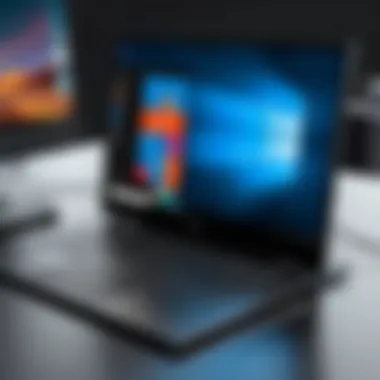
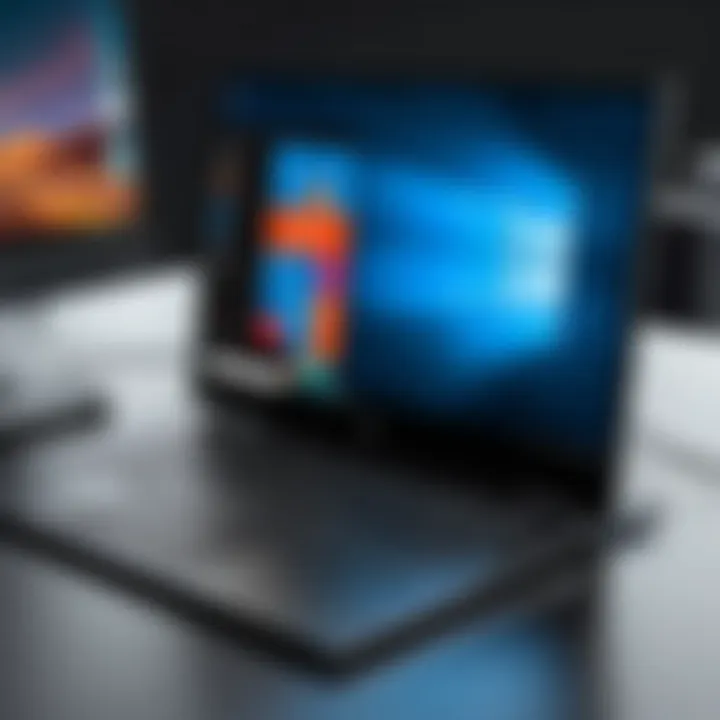
Managing the recording settings in the Game Bar allows users to customize their recording experience. This process is essential to ensure that the output meets user expectations. To manage these settings:
- Open Settings from the Start Menu.
- Go to Gaming and select the Captures tab.
- Here, users can adjust the video quality, set a maximum recording length, and enable or disable audio capture.
Consider opting for higher quality settings if your device has the capacity. However, keep in mind that higher quality can result in larger file sizes. Additionally, make sure your microphone settings are properly configured if you wish to include commentary in your recordings.
The Game Bar is a powerful tool in Windows 10 for recording high-quality video sessions, making it indispensable for a variety of users. Understanding its features can enhance your recording capabilities.
Acquainting oneself with the Game Bar’s functionalities elevates the recording experience, enabling users to harness technology for their creative pursuits.
Third-Party Recording Software Options
Using third-party recording software can significantly enhance the recording experience on Windows 10. While the built-in tools are suitable for basic tasks, they may lack advanced features that professional users often require. Third-party options can offer a wider range of functionalities tailored to specific needs, making them important considerations for anyone serious about audio or video recording.
These software solutions often provide superior quality, more customization options, and robust editing features. They can cater to gamers, podcasters, and content creators alike. Furthermore, many of these applications are designed with user-friendly interfaces, enabling users to achieve high-quality recordings without steep learning curves.
Overview of Popular Options
Several third-party recording applications stand out in the market, each offering unique features:
- OBS Studio: Open Broadcaster Software is well-regarded for its flexibility, particularly in live streaming and screen recording. It supports multiple sources, including microphones and webcams.
- Camtasia: Primarily known for screen recording and video editing, Camtasia provides an intuitive interface and a range of tools for creating professional-quality videos.
- Audacity: A powerful audio recording application that is open-source. It excels in audio editing and provides various effects, offering a complete solution for audio projects.
- Bandicam: This software is popular among gamers for its ability to record high-quality gameplay footage. It is also user-friendly and allows for easy integration with other applications.
- Snagit: Known for screen capture, Snagit also features screen recording capabilities. It is suitable for creating tutorials and presentations, allowing for easy sharing of visual content.
Comparative Analysis of Features
When comparing these third-party tools, several features stand out and impact their usability:
- Ease of Use: Camtasia and Snagit are often praised for their user-friendly interfaces, making them ideal for beginners. OBS Studio, while powerful, may require more time to learn.
- Export Formats: Most tools support a variety of export formats. Audacity, for instance, allows saving in WAV, MP3, and more, while Camtasia offers options for video formats.
- Editing Capabilities: Camtasia leads in editing features, allowing users to include annotations, transitions, and effects in their recordings. In contrast, OBS Studio is more focused on capturing streams without extensive editing features.
- Price: Audacity remains a favored choice due to being free, while others like Camtasia and Bandicam come with licensing fees, which can be a consideration for budget-conscious users.
- Technical Support: Commercial software like Camtasia usually offers dedicated customer support, unlike open-source alternatives that rely on community support.
Using the appropriate third-party tool can elevate your recording experience on Windows 10. Take time to explore each option's offerings and find the best fit for your recording needs.
Enhancing Audio Recording Quality
Enhancing audio recording quality is crucial for achieving professional sound results, whether for podcasts, music, or other creative projects. Good-quality recordings can engage listeners and convey messages more effectively. Therefore, it is important to pay attention to several key elements that influence the outcome of a recording. In this section, we explore microphone selection, setup, and adjustments that improve audio fidelity and reduce unwanted noise.
Microphone Selection and Setup
Choosing the right microphone can make a significant difference in recording quality. Various types of microphones are available, each designed for specific applications. Generally, the most common types include dynamic microphones, condenser microphones, and ribbon microphones. Each has distinct characteristics suitable for different environments and purposes.
Dynamic microphones are often preferred for live sound due to their durability and ability to handle high sound levels. On the other hand, condenser microphones are excellent for studio recordings, capturing detailed sounds with greater sensitivity. Ribbon microphones offer vintage sound qualities, typically used in controlled environments.
Once you select a microphone, proper setup is equally important. Start by positioning the microphone at an appropriate distance from the sound source. Placing it too close can lead to distortion, while positioning it too far can result in a weak sound. Using a microphone stand or boom arm can help achieve optimal placement and minimize handling noise. Additionally, consider using pop filters to reduce plosive sounds caused by consonants like 'p' and 'b'.
Adjusting Audio Settings
After setting up your microphone, adjust the audio settings to optimize recording quality. Several adjustments can be made within the system settings of Windows 10. Begin by opening the Sound settings from the Control Panel or by right-clicking the speaker icon in the system tray and selecting 'Sounds'. From there, navigate to the Recording tab to find your connected microphone.
Here are some key adjustments to consider:
- Volume Level: Ensure the input volume is set at an appropriate level. Too high levels may result in clipping, while too low levels may produce a faint sound.
- Format: Select a quality format for recording. Common choices include 16-bit/44.1 kHz or 24-bit/96 kHz; the higher the bit depth and sample rate, the better the potential audio quality.
- Enhancements: In the microphone properties, you might find options for noise suppression or acoustic echo cancelling. Enabling these can significantly improve clarity by minimizing background noises.
Remember that fine-tuning your audio settings can drastically enhance the end result of your recordings, creating a professional sound that captivates your audience.
Overall, enhancing audio recording quality involves careful consideration of equipment and settings alike. Make sure to experiment and adjust according to your specific recording environment and type of project.
Troubleshooting Common Recording Issues
Effectively capturing audio or video on Windows 10 can sometimes encounter obstacles. Understanding how to troubleshoot common recording issues is crucial for achieving optimal results. This section will cover common problems users may face and provide actionable solutions to enhance the recording experience. By identifying and resolving these issues, you can minimize frustration and maximize the utility of your recordings.
Addressing Audio Problems
Audio problems can manifest in several ways during a recording session. These issues may include distorted sound, no audio capture, or low volume. Here are some essential steps to diagnose and resolve audio problems:
- Check Your Microphone: Ensure your microphone is properly connected, whether it’s a USB microphone or a 3.5mm jack. Always test the connection before starting a recording.
- Select the Right Input Device: In Windows 10, navigate to Settings > System > Sound. Under the input section, confirm that the correct microphone is selected. Sometimes, Windows may default to an incorrect device.
- Adjust Volume Levels: Also in the sound settings, check the input volume. Increase it if the recording volume appears low. Look for the microphone properties by clicking on Device Properties and adjusting levels there.
- Update Drivers: Outdated drivers can lead to audio issues. Ensure that your audio drivers are up to date. You can do this through the Device Manager by searching for your audio input device and selecting "Update driver."
Tip: Regularly checking for Windows updates can also help ensure necessary audio drivers are current.
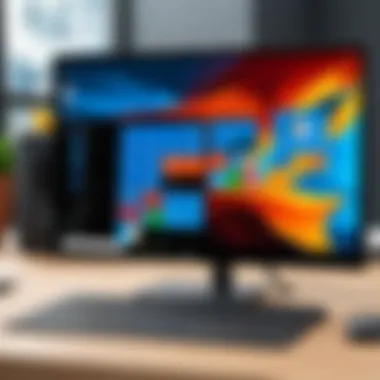
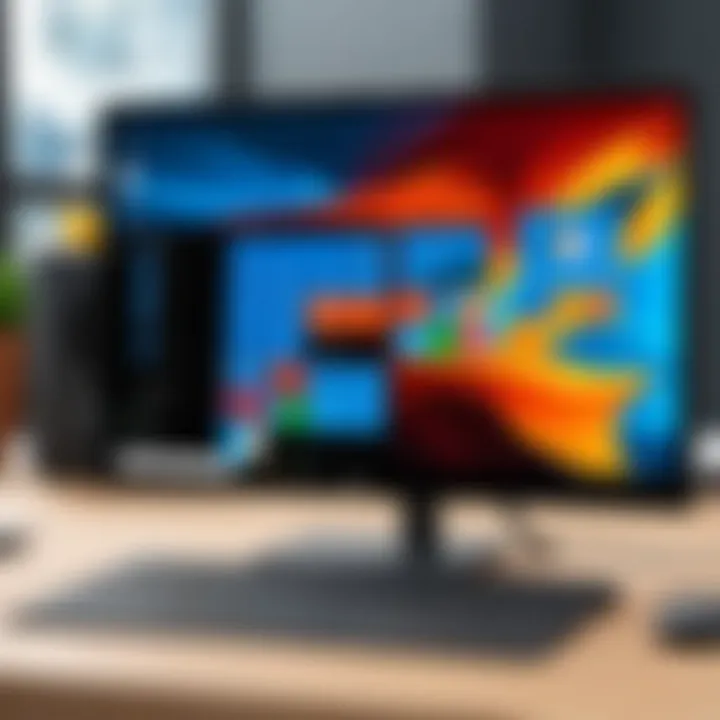
If these steps do not resolve the issue, consider testing the microphone in another application or checking the microphone with another computer.
Resolving Screen Recording Issues
Screen recording on Windows 10 can also pose challenges, but knowing how to troubleshoot can smooth the process. Common issues include capture not starting, a black screen during recording, or lag in the recordings. Consider the following suggestions:
- Activate Game Mode: If you're using the Game Bar, ensure Game Mode is activated in Settings > Gaming. Sometimes, this mode needs to be enabled to start recording correctly.
- Microsoft Store Apps Only: Remember that the Game Bar records only certain applications. If you are trying to record a desktop or application that is not a Microsoft Store app, the recording may not function as expected.
- Graphics Driver Issues: Outdated graphics drivers can create conflicts with screen recording. Update these drivers using your graphic card’s software (such as NVIDIA or AMD).
- Close Unnecessary Applications: Running multiple applications can lead to lag. Close any unnecessary programs before starting your recording session to ensure smooth performance.
- Recording Region: Check the settings for the recording region. In some cases, selecting a specific area on the screen rather than the whole screen might need adjustment.
By being aware of these potential issues, you can set yourself up for successful recordings. Troubleshooting may seem tedious, but resolving these common hiccups will enhance the overall quality of your recording experience.
Saving and Exporting Recordings
Saving and exporting recordings may seem like simple tasks, but they are crucial steps in the recording process. Properly saving your recordings ensures you do not lose valuable data, while exporting them enables sharing and further use. Understanding these elements can greatly enhance the usability and accessibility of your recordings.
When you save a recording, it’s effectively preserved in the format you choose. The right format can impact quality, compatibility, and file size. Hence, making informed decisions about saving ensures that your work retains its intended use, whether for personal enjoyment or professional distribution. It is important to recognize that different platforms and applications support various formats, so users should choose what best suits their requirement. Additionally, maintaining an organized approach to saving is essential to avoid confusion later, especially if multiple recordings are managed.
Exporting takes this a step further, allowing users to share their recordings with others or use them in different contexts, such as video editing or online sharing. This process often involves converting files into universally accepted formats, which can be played across devices without issue. Understanding the nuances of both saving and exporting provides a framework for efficient data management and ensures recordings are utilized to their full potential.
"Recording processes do not end with the click of a record button; they extend into thoughtful saving and exporting for enhanced functionality."
Format Options for Saving
Choosing the right format for your recordings is a fundamental aspect of the saving process. Windows 10 supports various formats, each offering distinct advantages. For audio recordings, formats like MP3, WAV, and M4A are common. MP3 is popular due to its compression capabilities, making it easier to store and share without significant quality loss. WAV, on the other hand, provides high-fidelity sound but comes at the cost of larger file sizes, making it suited for professional applications.
For screen recordings, video formats like MP4 and AVI are prevalent. MP4 is a versatile format that strikes a balance between quality and file size. It is widely compatible across platforms, making it the go-to choice for many users. AVI may be less compressed, resulting in larger file sizes but often maintains superior quality, especially for editing purposes.
In summary, the choice of format affects usability. Evaluating the intended purpose of your recording helps in selecting the appropriate format.
Location Choices for File Storage
Where you store your recordings is just as vital as how you save them. Windows 10 offers various locations for file storage, including local drives and cloud options. Local storage provides fast access, while external drives can serve as additional backup.
However, cloud storage solutions such as OneDrive or Google Drive provide invaluable benefits. They offer remote access, ensuring that recordings are secure and reachable from different devices. Moreover, cloud storage often includes automatic backup features, further protecting your recordings from loss.
To streamline storage, it is beneficial to create a dedicated folder for recordings. This keeps everything organized and easy to navigate. Users can categorize recordings by type or date for even better structure. By choosing the right storage options, users can improve accessibility and security for their recordings.
Best Practices for Effective Recordings
In the landscape of digital media, recording plays a vital role. Whether for creating content, conducting interviews, or sharing tutorials, understanding best practices is essential. Adopting these approaches can significantly enhance the quality and effectiveness of your recordings. This section focuses on key aspects, such as preparation, execution, and review, which together ensure optimal results.
Pre-Recording Checklist
Before initiating a recording session, there are several steps to consider. This checklist can help streamline the process and avoid common pitfalls:
- Define the Purpose: Identify what you aim to achieve with the recording. A clear objective guides the content and tone.
- Select the Right Tools: Choose appropriate software or equipment. For video, the Game Bar of Windows 10 works well while Voice Recorder is ideal for audio.
- Check Equipment Reliability: Ensure that your microphone and other devices are in working condition. Run a quick test to confirm functionality.
- Optimize Recording Environment: Try to minimize background noise. A quiet room yields clearer audio. Adjust lighting conditions for video recordings.
- Prepare Any Visual Aids: If your recording involves presentations or graphics, ensure these materials are organized and easily accessible.
Following this checklist can alleviate stress before recording and contributes to a smoother experience.
Post-Recording Review
Once the recording is complete, it is important not to overlook the post-production phase. Reviewing the recorded material can reveal insights for future sessions. Here are the steps to consider:
- Listening or Watching the Recording: Take the time to thoroughly watch or listen to the completed recording. Make notes on areas that stand out or need improvement.
- Assessing Audio Quality: Pay attention to tone, clarity, and volume levels. Check if there are any distracting sounds that could have been avoided.
- Evaluating Content Value: Consider whether the content met your original objectives. Reflect on the audience's needs and whether the recording addressed them effectively.
- Editing if Necessary: If required, use editing software to enhance the recording. Cut unnecessary segments or add annotations to clarify key points.
By implementing a thorough review process, you enhance the quality of your recordings and are better prepared for future projects. This focus on best practices ultimately leads to higher engagement and satisfaction for your audience.
End and Recommendations
In the digital era, recording audio and video has become a fundamental skill. The ability to capture important moments, presentations, or creative projects adds significant value to both personal and professional settings. This article has guided you through various recording solutions on Windows 10, from built-in tools to third-party applications.
Recap of Key Points
Throughout this guide, we covered several essential aspects of recording:
- Built-in Features: Windows 10 provides the Windows Voice Recorder and the Game Bar, enabling straightforward audio and screen recording. These tools are accessible and user-friendly, catering to beginners.
- Third-Party Software: For advanced needs, several third-party applications offer extensive features. Options like OBS Studio, Bandicam, and Audacity are powerful tools that enable greater flexibility and enhanced quality of recordings.
- Audio Quality: The significance of selecting the right microphone and adjusting audio settings was emphasized. A good quality microphone can make a notable difference in the final output.
- Troubleshooting Tips: Common recording issues were addressed. Knowing how to solve these issues saves time and frustration during critical projects.
- Post-Recording Steps: Saving and exporting recordings in the right format is crucial. Understanding storage options can prevent data loss and ensure easy access to files.
Future Exploration of Recording Tools
With technology advancing fast, exploring new tools and methods can further enhance recording capabilities. Consider searching for:
- Emerging Software: Keep an eye on new recording applications that might offer unique features not available yet in popular software.
- Integration with Cloud Services: Investigate how cloud storage can streamline saving and sharing recordings.
- Collaboration Tools: As remote work becomes more common, explore tools that facilitate collaborative recordings and project management. Options like Microsoft Teams and Zoom have built-in recording features that are worthy of exploration.
Ultimately, staying informed about advancements in recording technologies will empower users to make the most of their recording endeavors.



